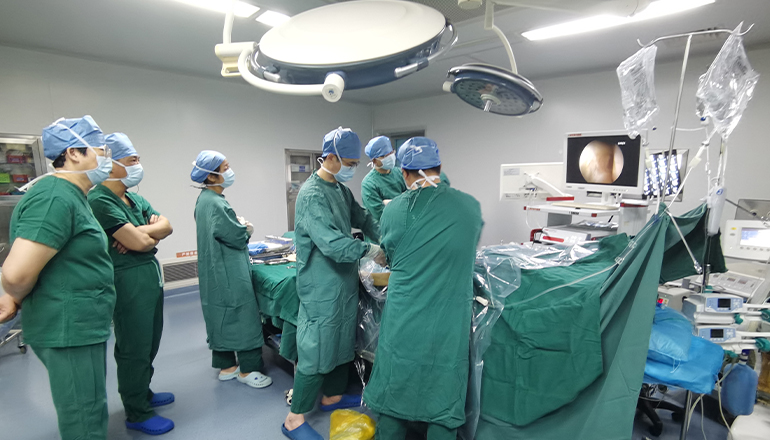- Shanghai, China
- [email protected]
- +86-21-58189111
A popliteal cyst, also known as a Baker's cyst, is a fluid-filled swelling that develops at the back of the knee. It is usually the result of an underlying knee joint problem, such as arthritis, cartilage tears, or other injuries.
The treatment of a popliteal cyst depends on the underlying cause and severity of symptoms. In many cases, the cyst can be managed with conservative measures such as rest, ice, compression, and elevation (RICE), as well as medication to manage pain and inflammation.
However, in some cases, the cyst may need to be drained or removed surgically. Arthroscopic minimally invasive treatment is a common procedure used to treat a popliteal cyst.
During arthroscopic surgery, a small incision is made at the back of the knee, and a small arthroscope (a thin, flexible instrument with a camera and light source) is inserted into the joint. The surgeon uses specialized instruments to drain the cyst and remove any damaged tissue or debris. The incision is then closed with sutures or surgical tape.
Arthroscopic minimally invasive treatment of popliteal cysts has several advantages over traditional open surgery. It is a minimally invasive procedure, which means it requires smaller incisions and causes less tissue damage. This results in less pain, faster recovery time, and a lower risk of complications, such as infection and blood loss.

The procedure is usually performed under general anesthesia, and patients can usually go home the same day. After the procedure, patients may experience mild pain, swelling, and stiffness, which can be managed with medication and physical therapy.
However, arthroscopic minimally invasive treatment may not be suitable for all cases of popliteal cysts. Patients with large cysts, significant joint damage, or other underlying health conditions may require more extensive treatment, such as open surgery.
It is important for patients to discuss their treatment options with their healthcare provider and weigh the benefits and risks of each option before making a decision. Factors like the size and location of the cyst, as well as the patient's age and overall health, will all play a role in determining the most appropriate treatment plan.
Arthroscopic minimally invasive treatment is a safe and effective procedure for the treatment of popliteal cysts. The procedure offers many benefits over traditional open surgery and has a high success rate when performed by a skilled and experienced surgeon. Patients should work closely with their healthcare provider to determine if this procedure is appropriate for their individual needs and circumstances, and to explore other treatment options if necessary.
It is important for patients to follow their post-operative instructions and attend follow-up appointments with their healthcare provider to monitor their recovery and ensure the successful removal of the cyst. Patients may also require additional testing, such as imaging, to confirm the complete removal of the cyst and to monitor for recurrence.
Patients should also be aware of the potential risks and complications associated with arthroscopic minimally invasive treatment of popliteal cysts, such as bleeding, infection, nerve damage, and complications related to anesthesia. However, these risks are generally low and can be minimized by choosing a qualified and experienced surgeon and following pre- and post-operative instructions carefully.
In conclusion, arthroscopic minimally invasive treatment is a safe and effective option for the treatment of popliteal cysts. It offers many benefits over traditional open surgery, including smaller incisions, less tissue damage, and faster recovery time. Patients should work closely with their healthcare provider to determine if this procedure is appropriate for their individual needs and circumstances, and to explore other treatment options if necessary. With proper diagnosis and treatment, most patients with popliteal cysts can experience relief from their symptoms and return to their normal activities.
Leave a Comments